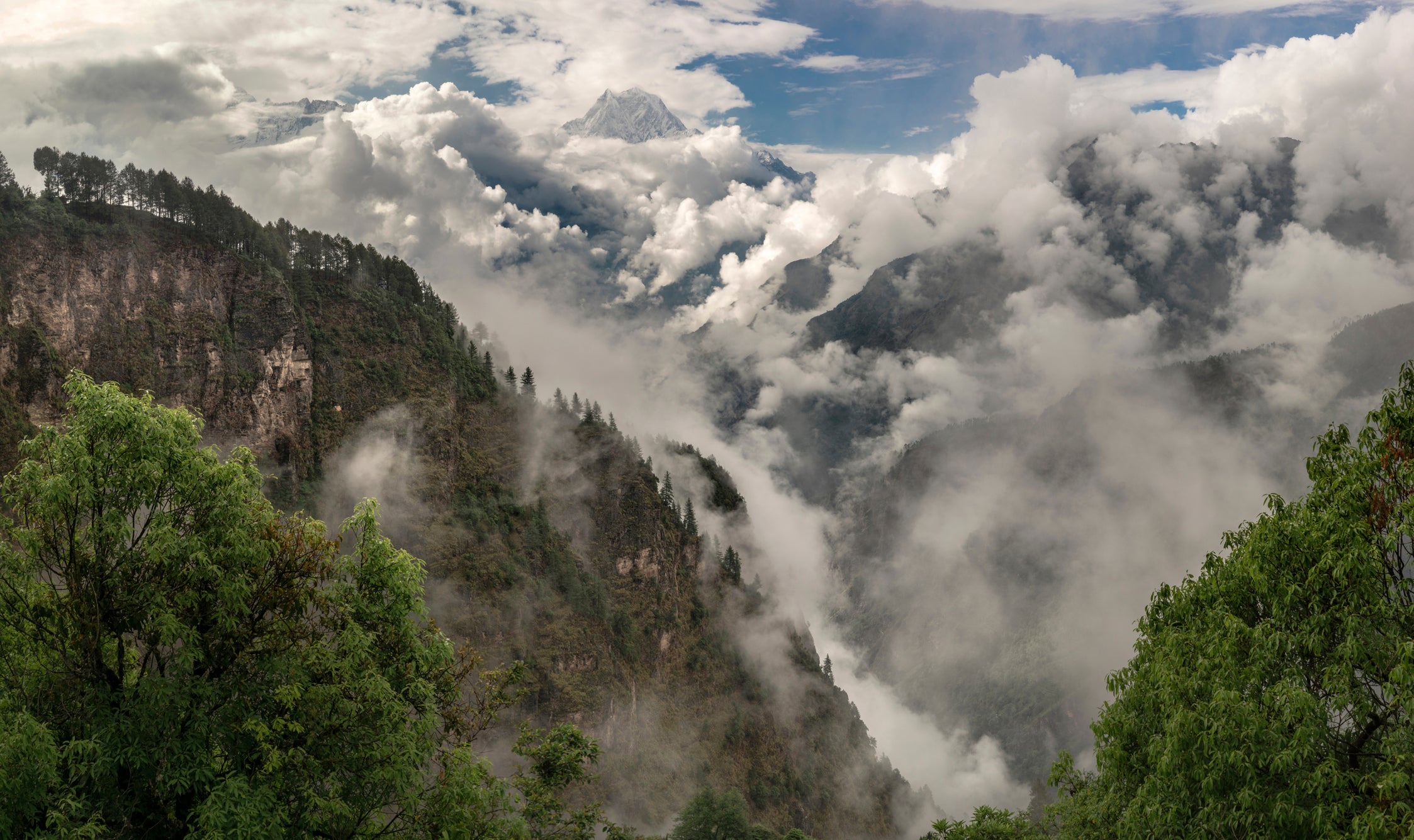‘Ground-breaking discovery’ reveals rain can move mountains, scientists say
Research shows atmospheric and solid earth processes are more intimately connected than previously realised, writes Harry Cockburn

It doesn’t take much imagination to recognise the enormous power rainfall has on the world - from bringing forth crops, to carving out rivers, or causing deadly flooding.
But the extent of the role raindrops play on mountain landscapes has long been debated, and now, may have been solved.
According to scientists led by a team at the University of Bristol, a new technique allows geologists to understand more precisely how the movement of water has shaped the highest peaks and deepest valleys on our planet.
The breakthrough allows the scientists to calculate erosion rates from rainfall, thereby providing a more accurate history of the interplay between the hydrology and geology of a particular region.
“It may seem intuitive that more rain can shape mountains by making rivers cut down into rocks faster. But scientists have also believed rain can erode a landscape quickly enough to essentially 'suck' the rocks out of the Earth, effectively pulling mountains up very quickly,” said lead author Dr Byron Adams from Bristol university's Cabot Institute for the Environment.
“Both these theories have been debated for decades because the measurements required to prove them are so painstakingly complicated. That's what makes this discovery such an exciting breakthrough, as it strongly supports the notion that atmospheric and solid earth processes are intimately connected.”
The findings, which focused on the mightiest of our planet’s mountain ranges - the Himalaya - also pave the way for forecasting the possible impact of climate change on landscapes and, in turn, human life, the scientists said.
The research team focused their efforts on the central and eastern Himalaya of Bhutan and Nepal, because this region of the world has become one of the most sampled landscapes for erosion rate studies.
Dr Adams, along with collaborators from Arizona State University (ASU) and Louisiana State University, used what are known as “cosmic clocks” within sand grains to measure the speed at which rivers erode the rocks beneath them.
He said: “When a cosmic particle from outer space reaches Earth, it is likely to hit sand grains on hillslopes as they are transported toward rivers. When this happens, some atoms within each grain of sand can transform into a rare element. By counting how many atoms of this element are present in a bag of sand, we can calculate how long the sand has been there, and therefore how quickly the landscape has been eroding.
“Once we have erosion rates from all over the mountain range, we can compare them with variations in river steepness and rainfall.
“We tested a wide variety of models to reproduce the observed erosion rate pattern across Bhutan and Nepal. Ultimately only one model was able to accurately predict the measured erosion rates," Dr Adams said.
“This model allows us for the first time to quantify how rainfall affects erosion rates in rugged terrain.”
Research collaborator Kelin Whipple, Professor of Geology at ASU, said: “Our findings show how critical it is to account for rainfall when assessing patterns of tectonic activity using topography, and also provide an essential step forward in addressing how much the slip rate on tectonic faults may be controlled by climate-driven erosion at the surface.”
The study findings could also be used to help inform land use management, infrastructure maintenance, and other hazards in the Himalaya, the scientists said.
In these mountains, there is the ever-present risk that the high erosion rates can drastically increase sedimentation behind dams, putting the many hydropower projects at risk.
The findings suggest greater rainfall can undermine hillslopes, increasing the risk of debris flows or landslides, some of which may be large enough to dam the river creating a new hazard - lake outburst floods.
Dr Adams said: “Our data and analysis provides an effective tool for estimating patterns of erosion in mountainous landscapes such as the Himalaya, and thus, can provide invaluable insight into the hazards that influence the hundreds of millions of people who live within and at the foot of these mountains.”
Dr Adams is now exploring how the research can inform how landscapes respond in the aftermath of large volcanic eruptions.
He said: “With our cutting-edge techniques to measure erosion rates and rock properties, we will be able to better understand how rivers and volcanoes have influenced each other in the past.
“This will help us to more accurately anticipate what is likely to happen after future volcanic eruptions and how to manage the consequences for communities living nearby.”
The research is published in Science Advances.





Join our commenting forum
Join thought-provoking conversations, follow other Independent readers and see their replies
Comments